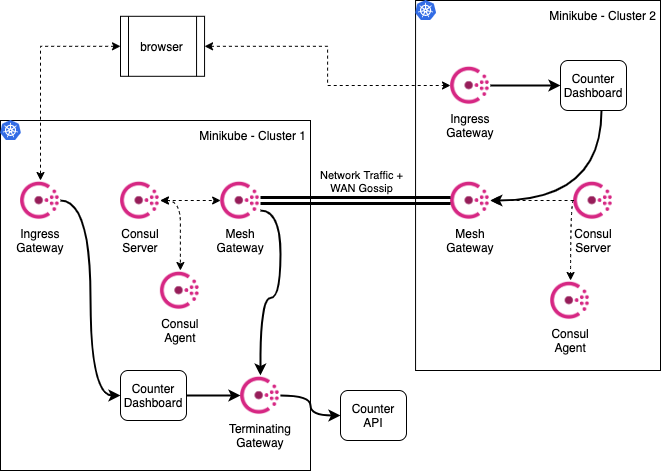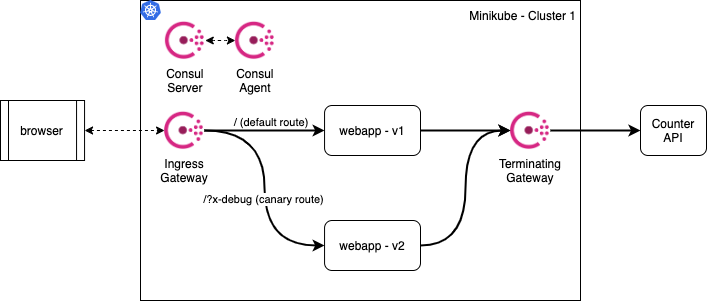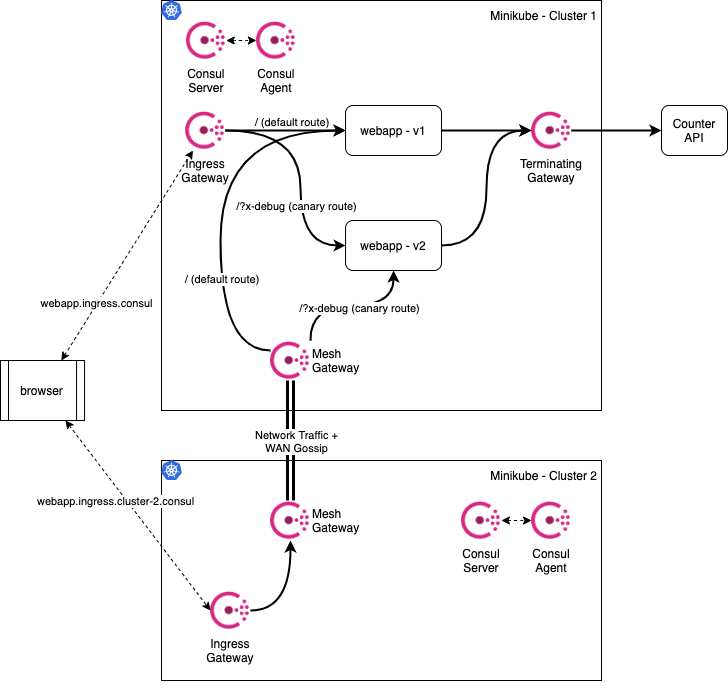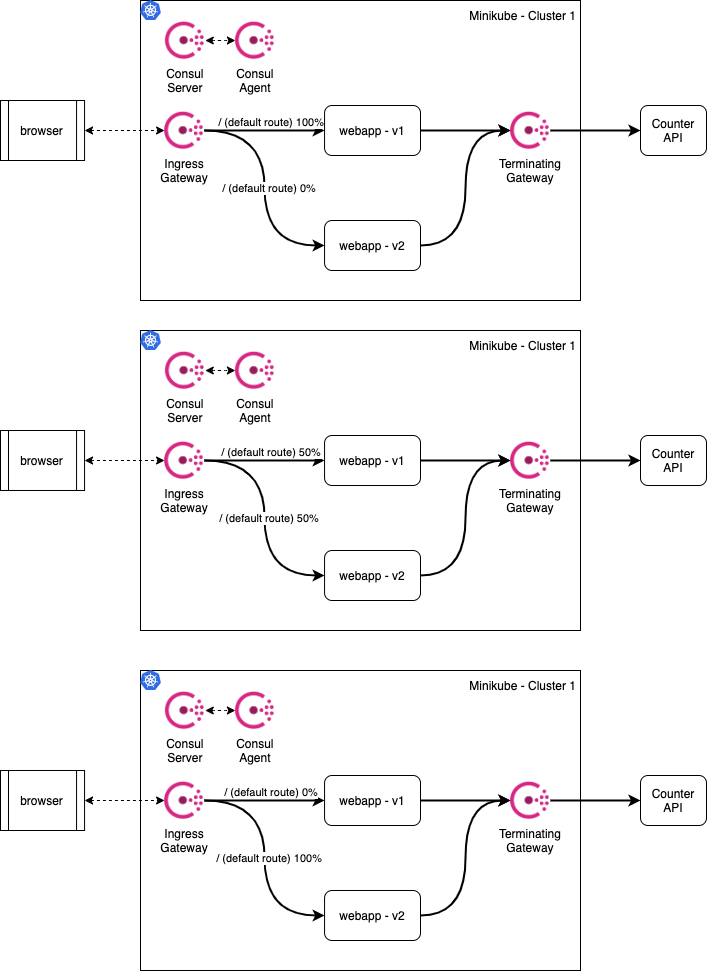Local Consul Demos
Please READ the Requirements section!
Overview
The objective of this repo is to display the possibilities of the different Consul gateways in a kubernetes environments
The steps are based in the fantastic work done at https://learn.hashicorp.com/consul/kubernetes/mesh-gateways
For more information, please visit https://www.consul.io/docs/connect/gateways/wan-federation-via-mesh-gateways
Requirements
I only tested this demo on macOS X with the Consul Enterprise version. There is no reason for this demo to not be able to use Consul OSS.
- kubectl 1.19+
- minikube 1.13+
- helm3
- docker-compose
- Consul 1.8.0+ cli installed on your machine
- an internet connection...
Using Consul Enterprise
For Consul Enterprise, please install the license, in line 72 and 73 of 01_setup.sh
Using Consul OSS
You need to edit the files values1.yaml and values2.yaml, by removing the specified container images
Setup
This will use the Mesh Gateway to federate the clusters, install an application, for the gateway to forward the traffic.
To start this demo, follow:
./00_start.shwill:- start 2 minikube clusters
- build 2 versions of the demo "webapp" within each minikube.
./01_setup.shwill:- Install Consul in both clusters
- Federate them using the Mesh Gateway
- Deploy the dashboard and webapp applications in each cluster
- Configure Consul intentions, routers, splitters, resolvers, ingress and terminating gateways :-O
- Add ingress hosts to your
/etc/hosts
At the end of the setup, you'll see the address of all exposed services of each cluster:
- consul-ui
- dashboard
- webapp
./02_external_counting.shwill- Start up the counting services with
docker-compose - Configure the external service in cluster-1
- Configure the Terminating Gateway
- Start up the counting services with
NOTE: the values.yaml files are altered to be compatible with minikube and not a recommended production setup
Demos
Mesh Gateways
Ingress
The services accessible via each ingress gateway are the dashboard (in each cluster) and the webapp
- https://dashboard-service.ingress.cluster-1.consul:30443
- https://dashboard-service.ingress.cluster-2.consul:30443
Federation/Mesh gateway
At the end of 01_setup.sh you can see all the URL to access the Consul UI and navigate between data centers.
If you access the dashboard on cluster-2 - https://dashboard-service.ingress.cluster-2.consul:30443 - the dashboard service will reach the external counting service that is registered in cluster-1, via the mesh gateway.
Terminating gateways
02_external_counting.sh explains how this is done and consul_config/counting-terminating-gateway.hcl explains the configuration.
Layer 7
Canary
The above image means that https://webapp.ingress.consul:30080 will return webapp - v1
Access https://webapp.ingress.consul:30080/?x-debug so you will always get webapp - v2
Bonus
You can also use the ingress gateway from Cluster 2 to access the services that exist in Cluster 1
The endpoints are:
- https://webapp.ingress.cluster-2.consul:30080
- https://webapp.ingress.cluster-2.consul:30080/?x-debug
Rollout
The rollout process is as follows:
-
Open the file
consul_config/webapp-splitter.hcland change the values to the percentages you want. -
To apply the file run:
source helper.sh
consul1 "config write" "consul_config/webapp-splitter.hcl"-
Keep refreshing https://webapp.ingress.consul:30080 to see the differences.
-
Repeat with different values
Quick explanation of the Consul config
Resolver
Consul Service metadata has been added to the annotations in the files in c1_manifests/counting-webapp-v1.yaml and c1_manifests/counting-webapp-v2.yaml.
This allows the filter in consul_config/webapp-resolver.hcl to work and define 2 subsets.
The Failover entry means that if the service is not found it should resolve to the webapp service in cluster-1 datacenter, which enables the ingress gateway request in cluster-2 to be routed to cluster-1
Router
The service router in consul_config/webapp-router.hcl allows the service requests to be routed via the splitter or via the HTTP paramaters.
This is why you get these two ways of acessing the webapp:
Splitter
The service splitter in consul_config/webapp-splitter.hcl defines the percentage of requests that goes to each ServiceSubset defined in the resolver.
Teardown
Use 03_teardown.sh to remove it all from your machine.



